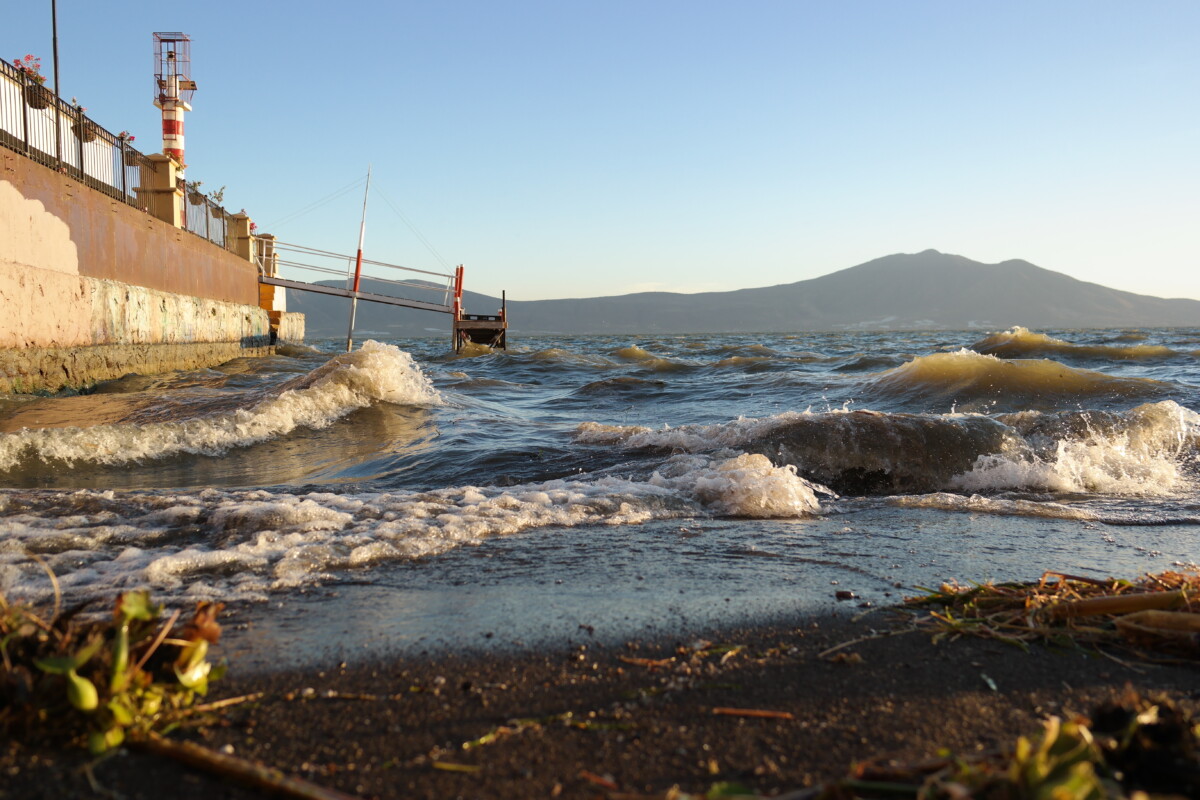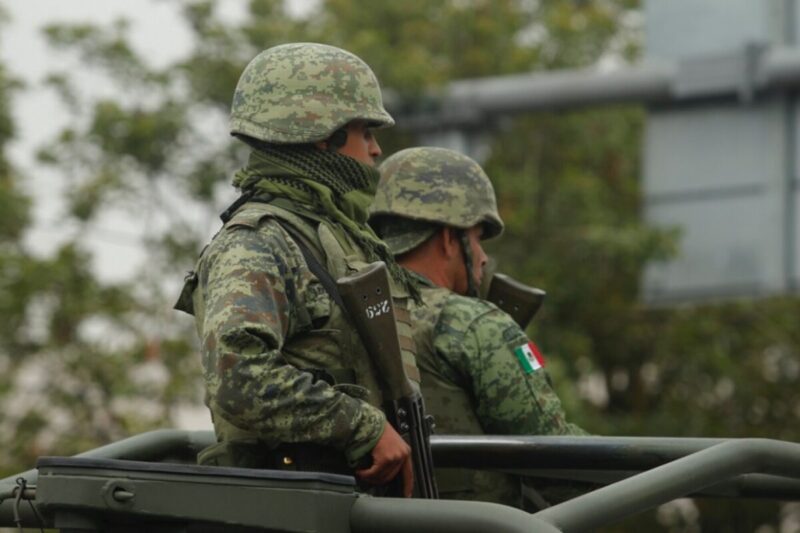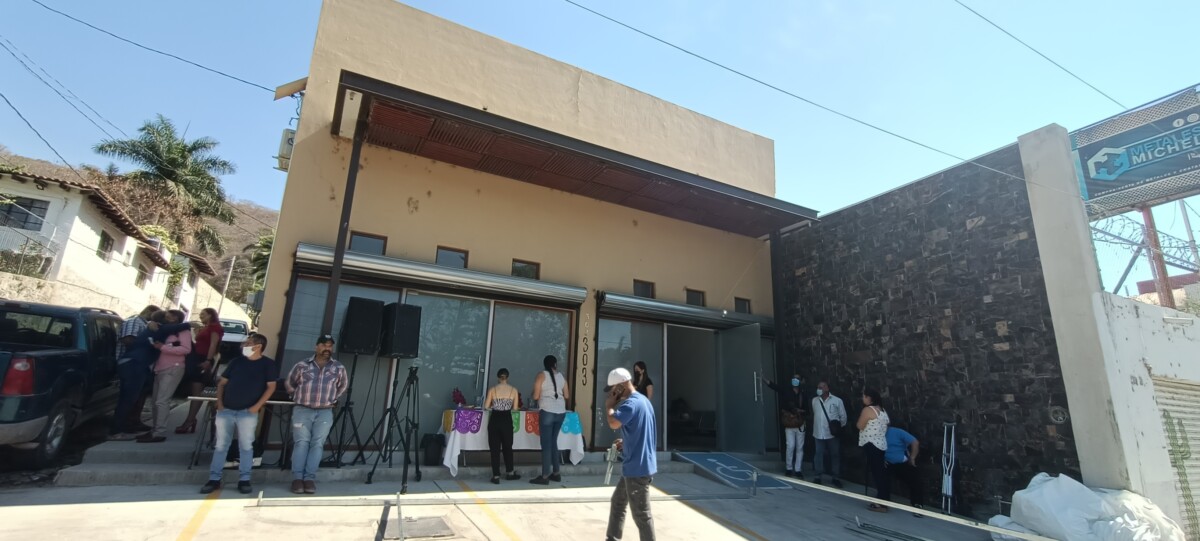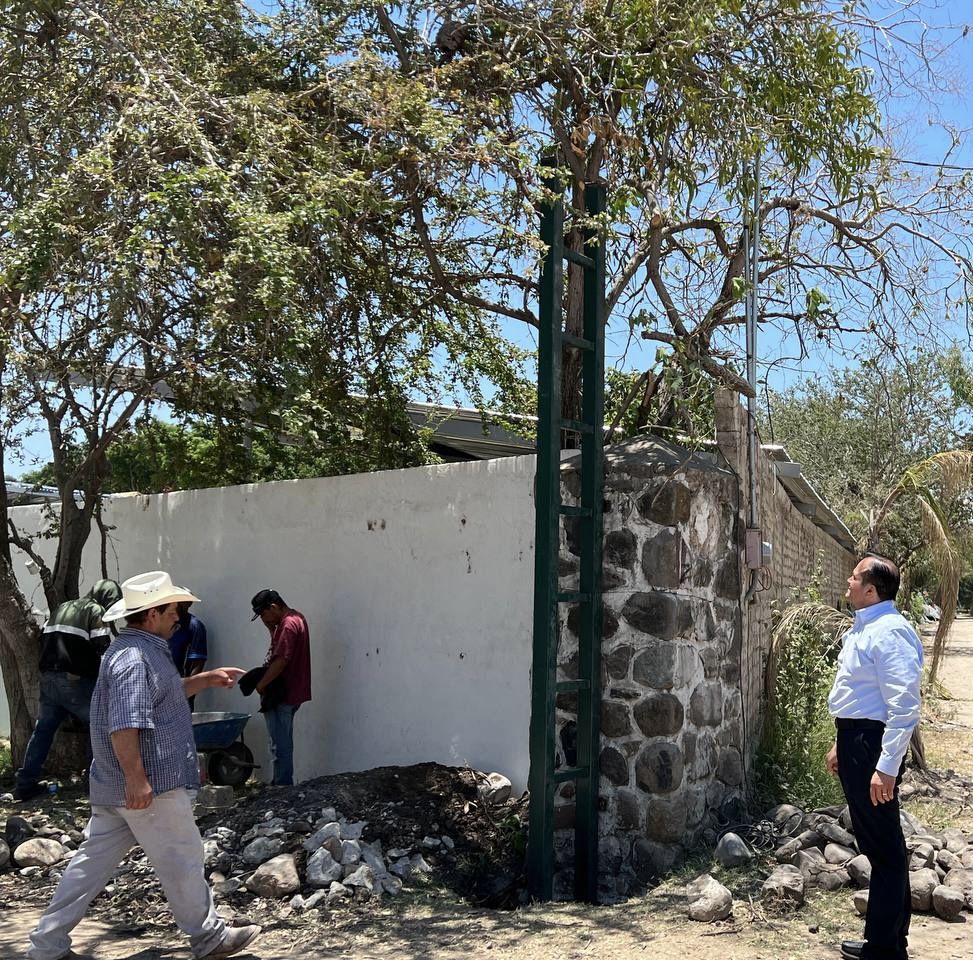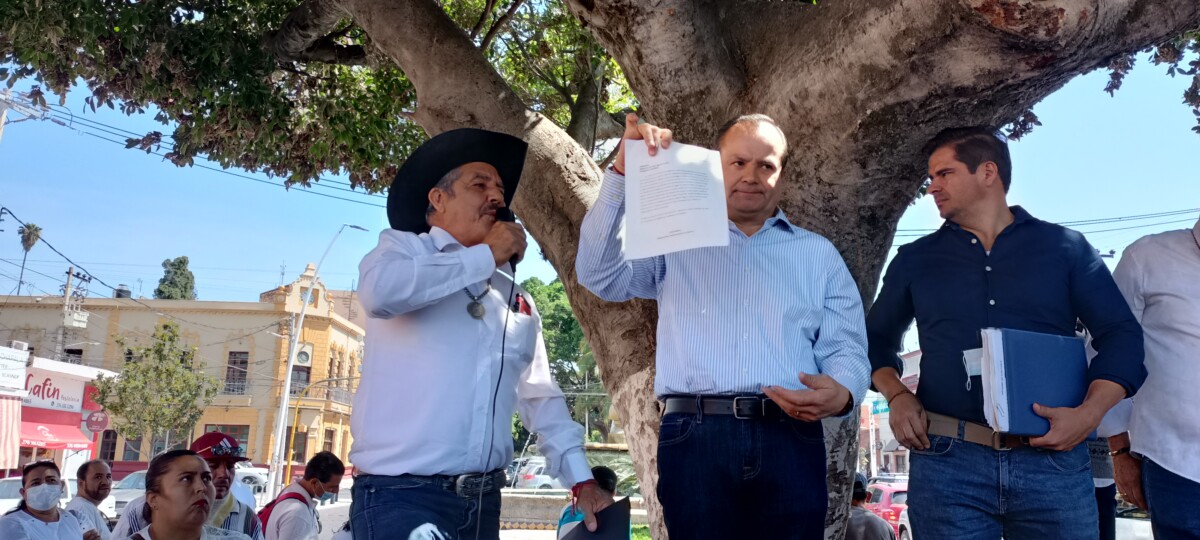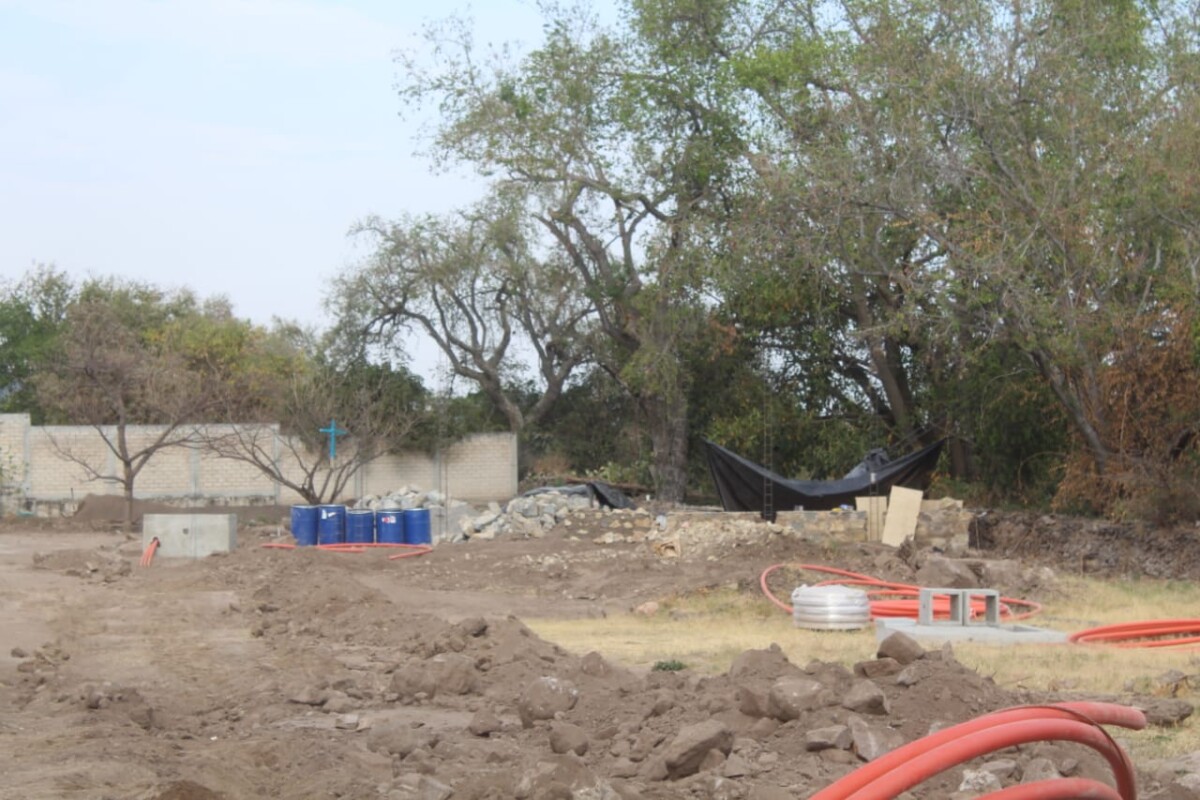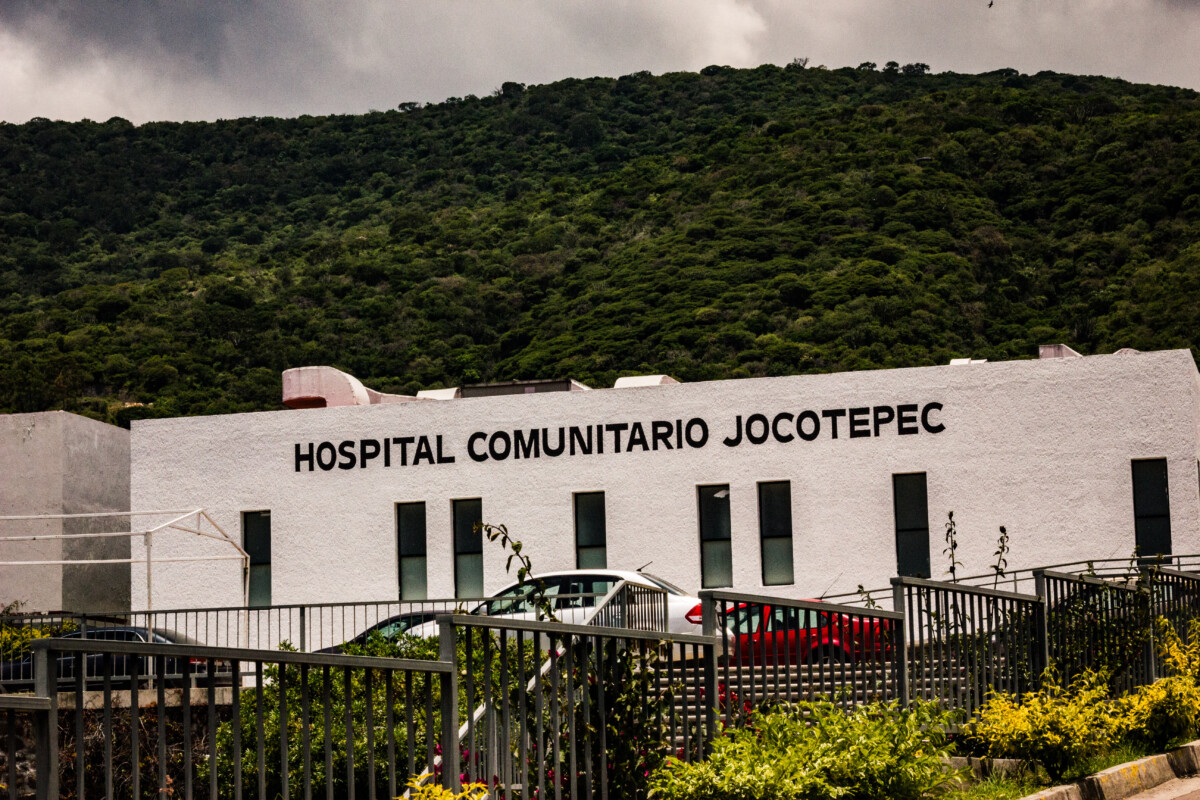Gobierno
Alfaro rules out construction of second Chapala-Guadalajara aqueduct
View of Lake Chapala from the shore of the beach next to the Ajijic dock. Photo: Archive.
Editorial Staff. Jalisco Governor Enrique Alfaro Ramírez ruled out the construction of a second aqueduct to supply the Guadalajara Metropolitan Area (AMG) during his term of office.
«This was my campaign commitment and I stand by it. We are not going to take one more liter from Chapala. We cannot drain the lake to solve the city’s supply problem. That commitment continues. We are not going to build a new aqueduct, but we are going to continue with the maintenance works of the old system,» said the state president.
He made this statement after academics from the Universidad de Panamericana (UP) urged state authorities to inquire about the need to build a new aqueduct to draw water from Lake Chapala.
The governor of Jalisco dismissed this observation by declaring that no more water can be taken from Mexico’s largest lake. The specialist in water technologies, Daniel Sánchez Tapetillo, replied that the second aqueduct would have the function of substituting for the first one in case it failed.
«The second aqueduct is not to take more water from the lake than the Guadalajara Metropolitan Area already has a concession for. To believe that is a mistake. We have a concession of 236.5 million cubic meters a year, that is, 7.5 cubic meters per second. The two aqueducts could never operate simultaneously.»
The specialist assured that, after 30 years of age, the maintenance of the first aqueduct is urgent, because in the event of a failure, 60 percent of the water needed would no longer be supplied. In his opinion the useful life of the current system has already been exceeded.
Sanchez Tapetillo said he regretted that the governor did not listen to the proposals of academics from the University of Guadalajara (UdeG), the Pan-American University (UP) or the Technological Institute of Superior Studies of the West (ITESO), since they are institutions that for years have reviewed the issue and their contributions are to act in time and prevent more than 60 percent of citizens of Guadalajara from running out of water.
Translated by Nita Rudy
New SIMAPA administrator appointed in San Nicolás de Ibarra
Juan Antonio Vázquez Ayala is the new water administrator in San Nicolás de Ibarra.
Jazmín Stengel (Chapala).- The petitions have been heard. Juan Antonio Vázquez Ayala was appointed as the new administrator of the Municipal Water and Sewage System (SIMAPA) in the delegation of San Nicolás de Ibarra, Chapala, at the insistence of the inhabitants.
During the meeting held on April 25 with the municipal president Alejandro de Jesús Aguirre Curiel and a committee of officials, the inhabitants of the town requested the replacement of Santiago García as administrator of SIMAPA and of the spokesperson Ricardo Razo, due to alleged mismanagement of the water and its wells, as well as the making of decisions without consulting the people.
Although the petition issued during the meeting by the villagers wanted Luis Morales Contreras and Irma Reyes Delgado included as part of SIMAPA’s municipal council, other people received the appointments.
Vázquez Ayala was appointed as the new water administrator in San Nicolás de Ibarra and will oversee the documentation, organization, procedures, complaints and recommendations that the population has before SIMAPA. In other words, he will act as an intermediary between the demands of the delegation and the central offices of the municipality.
The appointment of the new spokesperson, who will represent the population in the SIMAPA Council, has not yet been approved. However, the neighborhood committee will decide the new person in charge through a general meeting with the people, stated Vazquez Ayala, who took the opportunity to thank the mayor for his participation and the people for giving him their trust.
Translated by Sandy Britton
Vigilan Jalisco más de 12 mil elementos federales
Seis mil 410 son efectivos del Ejército y la Fuerza Aérea, cinco mil 512 son integrantes de la Guardia Nacional. Foto ilustrativa: Quadratín.
Redacción.- El Presidente de la República, Andrés Manuel López Obrador (AMLO), informó el pasado 13 de mayo que, debido a los recientes hechos violentos en distintos municipios, hay más de 12 mil elementos federales.
Tras la ola de violencia ocurrida en algunos municipios de Jalisco como Jocotepec, Tamazula, La Manzanilla de Paz, Mazamitla y Puerto Vallarta, 12 mil 362 elementos militares y de la Guardia Nacional vigilan el estado.
Seis mil 410 son efectivos del Ejército y la Fuerza Aérea, cinco mil 512 son integrantes de la Guardia Nacional y otros 440 provienen de la Secretaría de Marina “para garantizar la paz y la tranquilidad de los habitantes del Estado», declaró AMLO en la reunión sostenida en Zapotlanejo.
Inauguration of dialysis clinic inaugurated in Chapala
Front of the new dialysis clinic at 303 Hidalgo Avenue in Chapala. Photo: Jazmín Stengel
Jazmín Stengel (Chapala).- Go Health Mx Foundation installed a specialized dialysis clinic for people suffering from Chronic Renal Insufficiency, or CKD, in the municipality of Chapala. Hemodialysis patients must often have the treatments for life so the new facility ends the need for weekly drives to Guadalajara for treatment.The facility opened Monday, May 2 at 303 Hidalgo Avenue with the capacity to perform 2,800 treatments per year. This could save money and time for kidney patients in the Chapala area, which is one of the places in the world with the highest incidence of kidney disease. Industrial pollution in rivers and creeks in the greater Chapala and Santiago aquifers has been cited as a possible cause, as well as the agrochemicals and pesticides used on local farms, according to 2017 research by University of Guadalajara and the National Institute of Public Health.
Although world statistics show that one in 10 people suffer from kidney failure, on the shores of Lake Chapala the average rises to three out of every 10 inhabitants. The most affected communities are near the Santiago River basin, such as Mezcala, San Pedro Itzicán, San Juan Tecomatlán, Agua Caliente, and others. The local location will save time and travel expenses so patients no longer have to go to Guadalajara. Another advantage is the lower cost, 1,250 pesos per treatment, with expenses to be paid by the civil association, the Government of Chapala and the patient in equal parts of the total, equalling 416 pesos each.
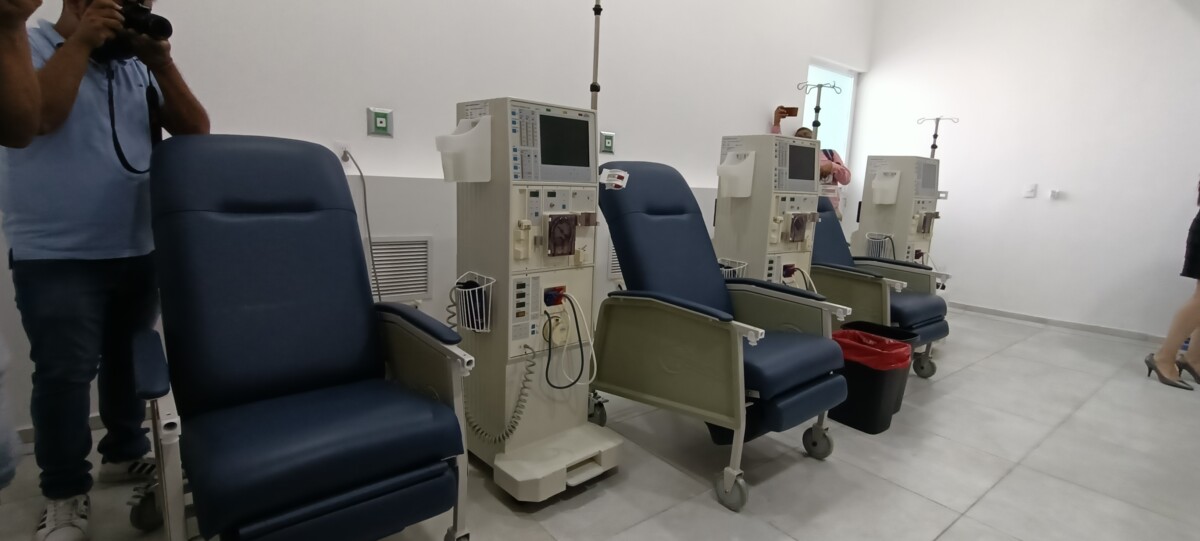
The Chapala unit has three dialysis machines. Photo: Jazmín Stengel.
Chapala municipal president Alejandro de Jesús Aguirre Curie, promised this to citizens of the municipality. However, although the unit has been inaugurated, the collaboration agreement contract with the Go Health Mx foundation is not yet ready. Those interested from other municipalities will go through a socioeconomic examination to evaluate the percentage of help that the foundation can offer.
Registration takes place at the hospital’s reception desk, which is open from 8 am to 5 pm on Mondays, Wednesdays and Fridays. It is expected that the hospital will soon keep its doors open all week. Days of service will increase according to demand.
Annual dialysis costs can reach up to 260,000 pesos (about US$13,000) per person, taking into account 1.2 treatments of three hours per week, according to 2019 data from the Mexican Institute of Social Security. It is best to have a kidney transplant in the first two years after initial diagnosis, before it becomes chronic. However, there are not enough kidneys available in Mexican organ donation banks.
Today in the municipality of Chapala there are 1,026 officially registered cases of kidney failure, and there are probably more. The clinic’s staff intends to rely on the municipal medical services to help identify those patients who have not yet been officially diagnosed. Aguirre Curiel promised to implement a laboratory where patients can perform their monthly tests at low cost. He also promised to start a series of agreements with private hospitals in the area so low-income patients can also be treated.

Purification center. The blue tanks are chemical and carbon filters, while clean water is stored in the white tanks. Photo: Jazmín Stengel.
In Jalisco, “the numbers are stark,” said Ángela María Soto Cruz, a nephrology specialist at the new clinic. In 2019 the state was listed as having the most cases of kidney failure registered internationally, surpassing some countries, with almost 7,000 cases as of the last census, more than 10 percent of the entire country.
This worried nephrology specialists, since many of these cases were detected in children, young people and adolescents who at a young age are already dependent on dialysis machines. According to studies by the University of Guadalajara in 2019, 51.4 percent of the cases in the state ended in death.
Dialysis and hemodialysis treatments consist of connecting the patient intravenously to a machine that acts as an artificial kidney. The machine cleans the blood from the kidneys by mixing it with completely purified water. The facilities in Chapala also have the proper chemical and carbon filters, as well as an ultraviolet light to eliminate all the microparticles that can harm the patient.
Translated by Mike Rogers
Opinion: From North to South
President Andrés Manuel López Obrador seeks to push an electoral reform initiative. Photo: Government of Mexico.
By: Abigail Angélica Correa Cisneros
Dissatisfaction with Mexico’s democracy validates President Andres Manuel Lopez Obrador’s proposal to reform the electoral law and reduce unjustified spending by up to 24 billion pesos.
Is this viable and positive for the country two years before the change of government? It will be difficult for legislators to approve the changes being sought and the proposal would remain only an attempt at a transition to more reliable institutions.
However, a policy change of this size is essential. Throughout the neoliberal period, there has been evidence the government could have functioned successfully had it not been complicit in fraud. Examples include 2006, when the Federal Electoral Institute was complicit with the Electoral Tribunal of the Judiciary of the Federation. Likewise, in 2012 with the massive vote-buying led by the Institutional Revolutionary Party.
This reform would modify 18 constitutional articles and include seven transitory articles. The National Electoral Institute, or INE, would become the National Institute of Elections and Consultations. It would eliminate 200 plurinominal deputations [a proportional representation in which votes are cast and counted for a list of named candidates collectively, rather than for individuals], list senators, local public electoral bodies and state electoral tribunals, reduction of the number of members of local congresses and regidurías, in addition to the establishment of popular vote as a mechanism for the election of the councilors of the electoral body and of the magistrates of the Electoral Tribunal of the Federal Judicial Power.
Another significant change, which makes approval of the proposal more difficult, would be the end of public financing for the ordinary activities of the parties, which would only be given a budget to face the elections.
The country’s democracy has been manipulated by the interests of those who have been governing for decades with the sole purpose of plundering the nation. On numerous occasions, it has been demonstrated that this electoral system does not work. This proposal intends, among other points, to reduce the number of councilors from 11 to seven and that these be elected, together with the magistrates of the Electoral Tribunal, by popular vote. The election would take place every six years, before the presidential elections, from 60 names proposed by the Executive Branch (20), the Judicial Branch (20) and the Legislative Branch (10 from the Chamber of Deputies, 10 from the Senate).
Likewise, the Chamber of Deputies is to be reduced from 500 to 300 legislators. The deputies would be elected from lists of candidates nominated by the parties and independent candidates in each of the 32 states.
The Senate of the Republic is contemplated in 96 senatorial seats out of 128; eliminating the current National List and generating that the three senatorial seats in each entity are elected from state lists.
Currently, INE owes a lot to Mexicans. It failed in the recent call for the revocation of mandate. In every electoral process there are reports of falsification of minutes. Councilors have been accused of obeying particular interests, especially those of the PRI. Their credibility is at rock bottom, according to the opinion of millions of Mexicans. The institution could use a change and a considerable saving in its budget.
Translated by Mike Rogers
Park in Riberas del Pilar being rehabilitated
The mayor of Chapala, Alejandro de Jesús Aguirre Curiel, during the inspection of the rehabilitation of the Riberas del Pilar park entrance.
Editor.– The municipal government of Chapala is continuing with the rehabilitation of public spaces in the city and the municipality’s surrounding towns. According to the municipal president, Alejandro de Jesús Aguirre Curiel, one of the locations receiving attention is Riberas del Pilar Park. The park is one of the most emblematic places of Riberas, with the two stone pillars supporting the neighborhood name.
«The Recovery of Public Spaces program continues throughout the municipality. Soon the public will be able once more to enjoy the Riberas del Pilar Park,» City Hall announced on social media.
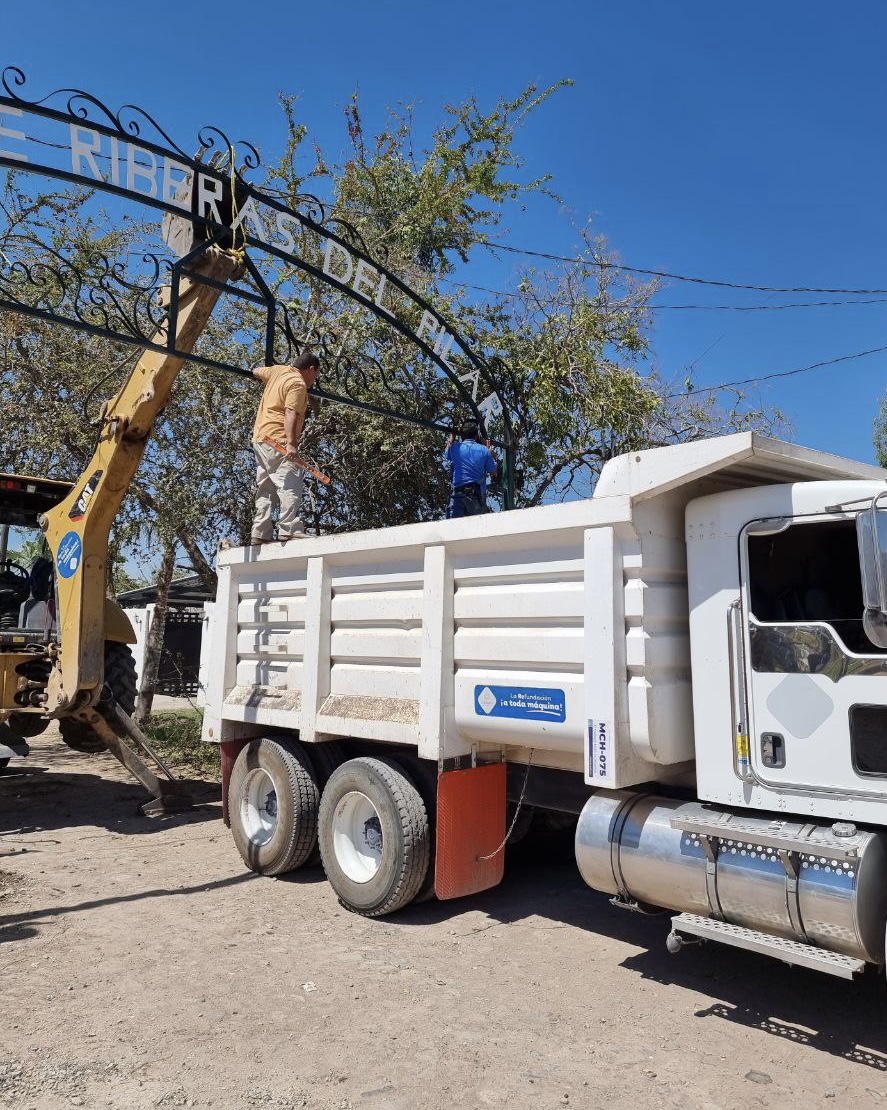
Workers of the Municipality of Chapala start with the rehabilitation of the Riberas del Pilar Park.
«The recovery of public spaces is being carried out with the objective that families will be able to enjoy public spaces worthy of our municipality and its people,» the director of Social Communication informed Seminario Laguna.
In addition to the iconic pillars, the sign for the park also received a freshening up.
Translated by Rebecca Zittle
Chapala City Council approves seven of ten union requests
In the center and with paper in hand, the municipal president of Chapala, Alejandro de Jesús Aguirre Curiel; (left) secretary general of the SPTAC union, Juan Cuevas Gudiño, and municipal trustee Gamaliel de Jesús Soto Pérez. Photo: Jazmín Stengel.
The municipal president of Chapala, Alejandro de Jesús Aguirre Curiel, gave the go-ahead to seven of the ten requests made by the Plural Union of Workers of the Chapala City Hall (SPTAC), in favor of the rights of the union civil servants.
The remaining three requests will be submitted to the municipal council for approval, according to the secretary-general of the union, Juan Cuevas Gudiño.
The list of requests included the approval of medical services for the worker’s dependent parents, minor children and students with a valid school card.
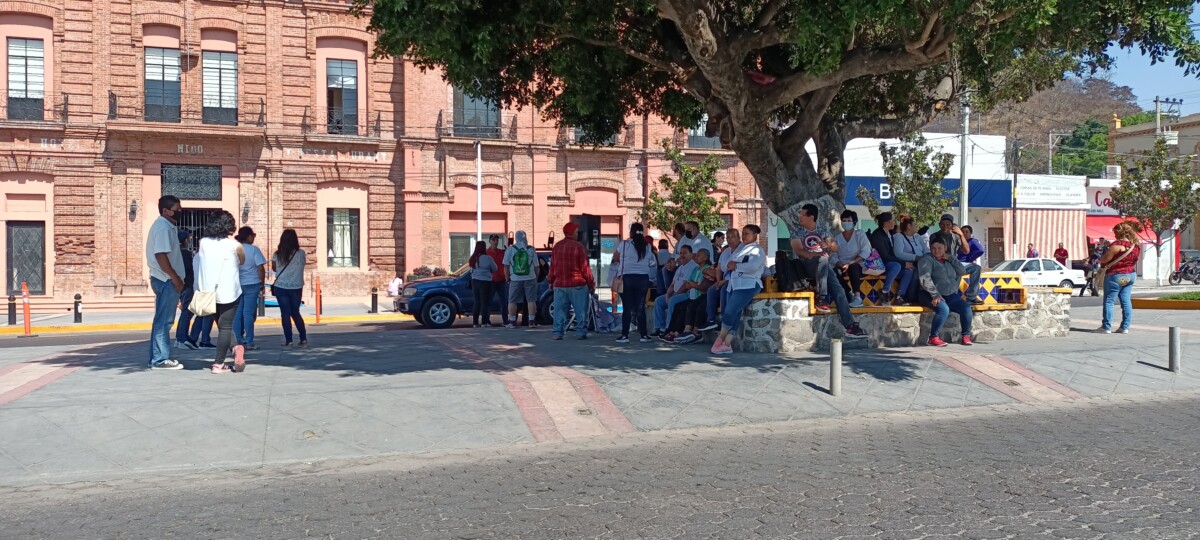
Members of the union outside the City Hall. Photo: Jazmín Stengel.
In addition, there will be an extra doctor and medical supplies at the Municipal Clinic so union members do not have to seek private consultation due to lack of attention or supplies.
In addition to the medical health requests presented by SPTAC, there is also the payment of overdue medical bills in an expeditious manner with the prior approval of the director of the Municipal Clinic.
Another issue is the vacation bonus corresponding to five legal days of salary. In order to collect the arrears, a review of documents will be carried out, stated Cuevas Gudiño.
it was also requested that the workers’ vacations be respected since there have been cases in which the directors have not allowed workers to take an absence from work, and that these vacations be made up if they are not given correctly.
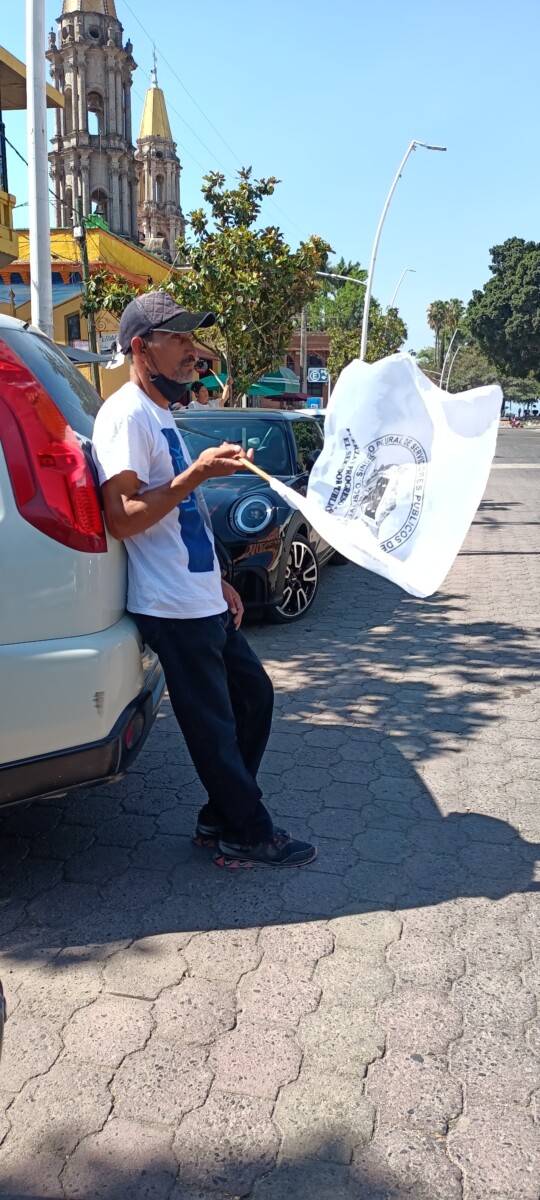
More than 300 people participated with flags and white T-shirts in the Labor Day march in the municipal capital of Chapala. Photo: Jazmín Stengel.
One of the most relevant requests approved by Aguirre Curiel during the almost one hour meeting was the right to affiliate for the 120 workers who have been working for the City Hall for more than three and a half years. SPTAC currently has 276 members.
The facilities of the Centro Cultural Antigua Presidencia or the Coliseo Municipal Benito Juárez were made available for the union assembly from 2:30 to 4:30 in the afternoon, the last Saturday of each month.
The three requests that will be submitted to the Chapala City Council for approval are: the delivery of the extra bonus for the Public Servant’s Day, the 40 pesos biweekly transportation support, and reimbursement for upcoming surgeries so as not to affect the family income of the union members.
Finally, Juan Cuevas Gudiño openly thanked the municipal president for the recent approval of the five percent salary increase, as well as the increase in the savings fund from 65 to 100 pesos per unionized worker, the coverage of surgeries and operations for the workers, as well as equipment to provide the citizens with the services they require.
The municipal president congratulated the workers on their day and reminded them of their commitment to work for the municipality. «I did not expect it would take us so long to get started… However, we have managed to move forward and stabilize. I thank everyone for their patience and support. It is clear to me that the face of the Municipal Government is each and every one of you,» acknowledged Aguirre Curiel.
Translated by Paul Weeks
Proyectan terminar el nuevo pozo de Ajijic a mediados de año
Predio donde se encuentra el pozo ubicado en los límites del municipio, en La Cristina. Foto: Sofía Medeles.
Sofía Medeles.– El nuevo pozo, cuyos trabajos iniciaron en el 2020, por fin están por concluirse, por lo que podría comenzar a funcionar tentativamente a mediados de este año, es decir, en junio.
El encargado del Sistema Municipal de Agua Potable y Alcantarillado (SIMAPA) Ajijic, Timoteo Aldana Pérez, manifestó que son varias personas las que se encuentran haciendo entre trabajos de tubería, infraestructura y eléctricos, para que en aproximadamente tres semanas se pueda “echar a andar”.
“Ya se hizo el trabajo de meter tubería, desde el pozo hasta donde se conecta al sistema del pueblo. Son 600 metros de tuberías de seis pulgadas. De ahí, prenderlo y ver cómo funciona”, explicó el funcionario.
Además, señaló que se tendrá que usar por tres o cuatro días para ver cómo funciona, ya que los pozos son impredecibles. “Pueden dar un buen aforo y luego bajar, no sabemos por qué, pero ha pasado. Seremos optimistas y esperamos que el pozo sea bueno y dure”.
Las zonas que beneficiará este nuevo suministro de agua son las del poniente de Ajijic, es decir, La Cristina, La Canacinta, Alceseca, Puerta Nueva, La Zapota, entre otros barrios.
Este pozo inició a construir en noviembre del 2020, por la administración encabezada por Moisés Alejandro Anaya Aguilar, sin embargo, sólo se hizo el trabajo de perforación.
Thanks to Federal extension of expiration dates, Jocotepec will use only valid Covid vaccines
Community Hospital of Jocotepec where vaccinations are delivered.
Héctor Ruiz Mejía (Jocotepec).-Medical authorities at the Community Hospital of Jocotepec assured the community that expired vaccines against Covid-19 will not be administered. The recent Federal extension of expiration dates for some classes of Covid-19 vaccines. makes this possible.
It was reported in several media outlets that over 59 million doses of the AstraZeneca biologic had an expiration date of April 30th. The Ministry of Health of Jalisco (SSJ) said that the Federal Government granted an «extension of useful life» for these doses, so they will be applied between May 15th and May 30th, as stated in the COFEPRIS-CAS-DEAPE-5010-2022 official communication.
The Federal Commission for the Protection against Health Risks (Cofepris) and the National Center for the Health of Children and Adolescents (CENSIA) stated these vaccines should not go to waste, so Jocotepec medical authorities will be able to use doses with the extended dates.
The authorities of the Jocotepec Community Hospital said that no expired vaccines will be administered, thanks to the extension of shelf life, and that so far this has not been a problem in the municipality.
The doctor said that only the necessary number of doses have been requested -about 1,500 doses for each vaccination day, in contrast to the 10,000 that were requested months ago. This will insure that no valid vaccine doses go to waste
Translated by Mary Woods
Electrical failure leaves half of Ajijic without water for a week
SIMAPA personnel repairing well number 4. Photo: Sofía Medeles
Sofía Medeles (Ajijic).- At least half of the town of Ajijic was left without water for approximately one week, due to an electrical failure that caused the pump of well number 4, located in Villa Nova, to the west of the delegation, to break down.
Timoteo Aldana Pérez, head of the Municipal System of Potable Water and Sewage (SIMAPA) Ajijic, stated that this was due to an electrical failure in the plant of the Federal Electricity Commission (CFE), which affected two pumps, one in Chapala and the one in Ajijic.
«The low voltage that was being sent shut down the two meter-tall, 125 horsepower pump at 7:00 am and we were notified at 11:00 at night. None of our nearby suppliers had a replacement , so we had to order it from Monterrey, which is why the repair was delayed,» explained Aldana Pérez.
Timoteo said this pump supplies at least half of Ajijic, from the neighborhood of Las Seis Esquinas, a part of El Tempisque and even the cemetery. Besides, being one of the largest pumps, it is used to send water to other parts of town when they need it, a process called “rebombing”.
The people in the affected areas complained about the lack of water, since it took them by surprise. One interviewee, named Sara, expressed her desperation during the last few days of drought, as the water in her tinaco ran out: «They can’t keep us like this for so long. Water is vital, and it is a service we pay for. Besides, they didn’t tell us about the water supplies they were handing out. Very poorly planned.
Areas such as La Canacinta, La Cristina or Alceseca were also affected, because not everyone has a water tank at home, as is the case of José: «We have a water tank, but the water there is different from the tap water. The tap water, we put it in drums and water tanks, and that is what we usually use. The water from the cistern is not dirty, but it has some fish so we use it for other things. But this time we had to use it because there was no water for a long time. It did affect us, because our reserve is less than half full.
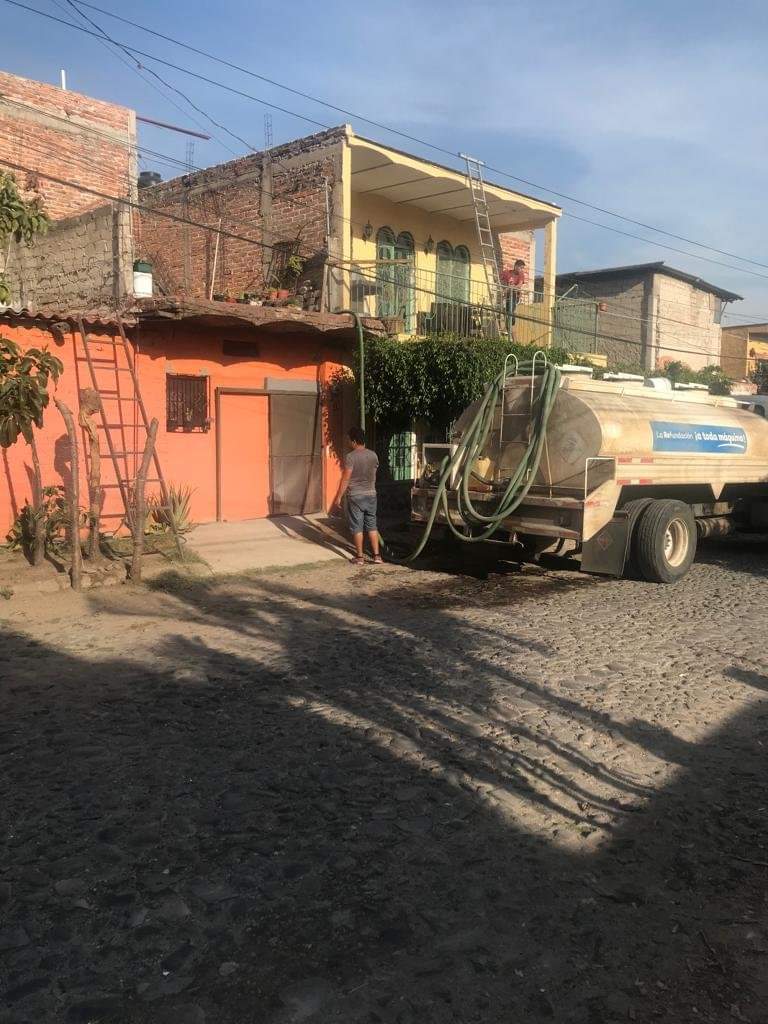
Water pipe supplying water in the western zone of Ajijic. Photo: Sofía Medeles
Regarding the water supplies, several citizens commented on SIMAPA’s bad communication, because they were never notified that the trucks would be going to the homes, nor on what days and at what times, or that they were free of charge.
«They only asked if we wanted water, but never said anything else, we did not know it was free, and some neighbors were not there. Supposedly it was delivered in two days, but we only heard about one,» commented Luis, who lives near the cemetery area.
Timoteo Aldana said that he hopes that people will become aware of the care and responsible use of water, because times have changed and it is not only the growth of the town, but also several other factors that lower the levels of the wells.
«The water is enough for Ajijic, but we must always take care of the levels of the wells. In some of them, the water is only enough to cover their area, something that did not happen before. We also have to be aware of the water levels, because the lower they are, the more heavy metals and impurities are concentrated, which make them unsuitable for drinking water. In these times, we have to use it for the most essential things, leaving aside gardens, swimming pools, etc.».
He assured that he is looking for strategies to regulate the use, especially in times of low water, and to make a more equitable distribution of the water for the town. Finally, he asked the inhabitants for prudence to avoid reaching an irreversible point, and pay their bills on time as SIMAPA has the tools for its work.
Translated by Patrick O’Heffernan
© 2016. Todos los derechos reservados. Semanario de la Ribera de Chapala
